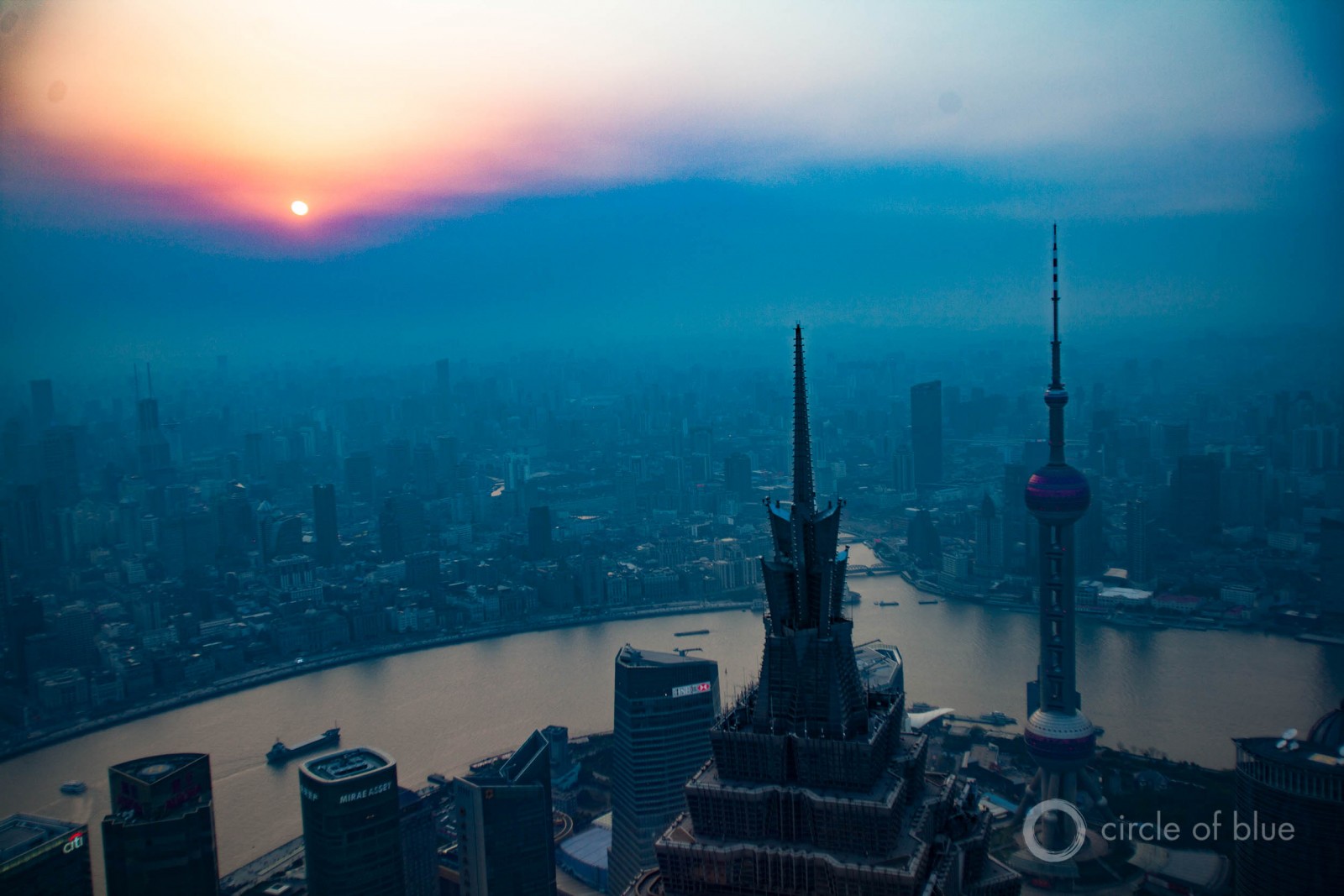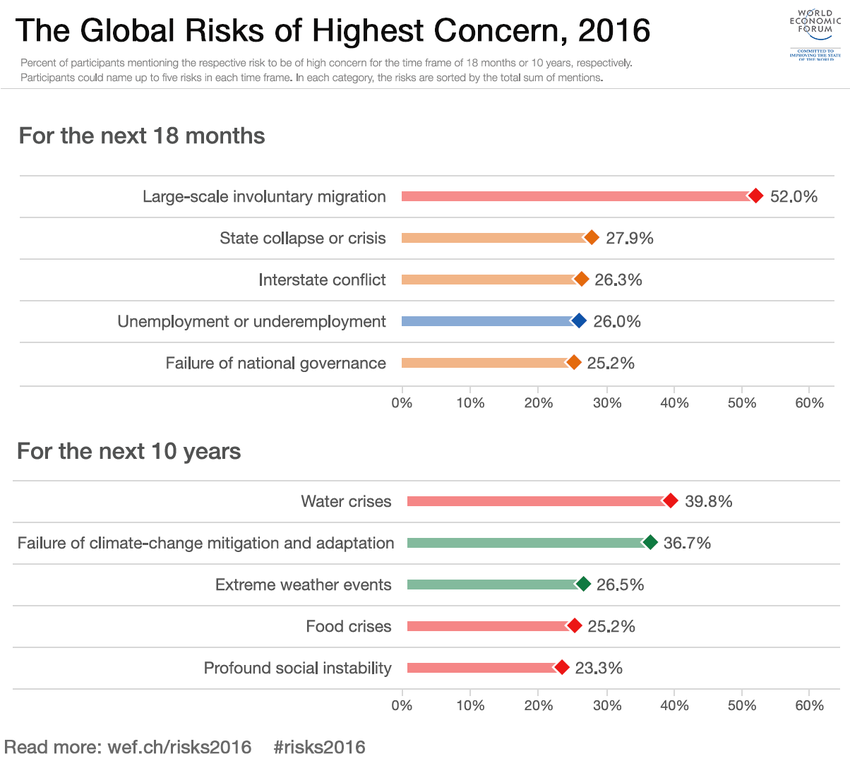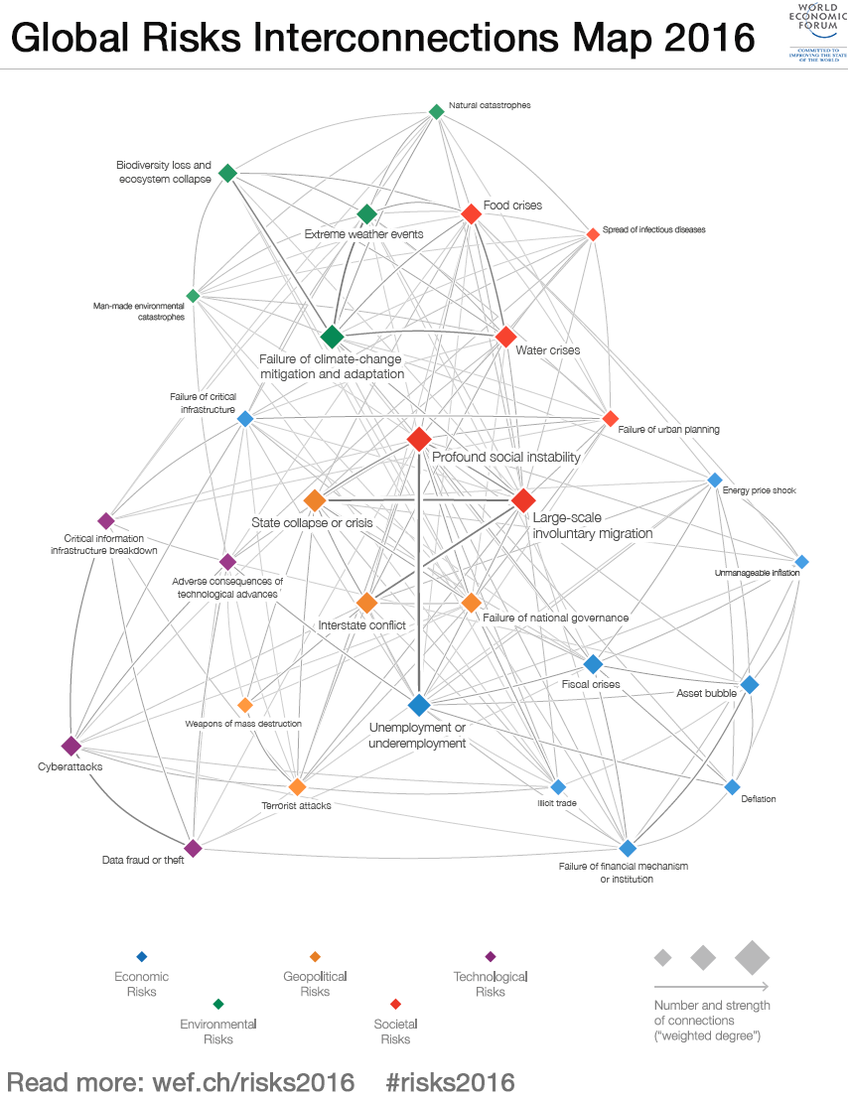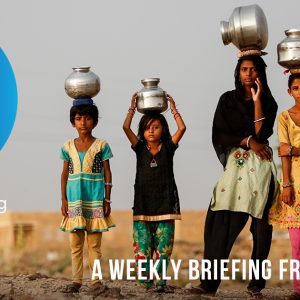
Shanghai, China. Photo J. Carl Ganter/Circle of Blue
This article originally appeared on the World Economic Forum’s website.
In the Global Risks Report 2016, which draws attention to ways that global risks could evolve and interact in the next decade, water crises features highly. Here are five reasons why.
If climate mitigation is about carbon emissions, climate adaptation is about water
Climate change is water change. Urban heat waves, melting snowpack, devastating floods, longer droughts, destructive wildfires, shrinking reservoirs, rising sea levels, desiccating soils, declining groundwater levels – all are consequences of an increase in carbon pollution and all can be traced to the loss or redistribution of fresh water. Whenever we talk about climate volatility, we also mean water volatility, therefore climate adaptation means preparing cities, farms, and industries for intensive periods of drought and flood. Even regions experiencing unusually heavy rainfall will not be able to capture and use excess water without additional storage capacity and more thoughtful management.
Warmer temperatures and deeper droughts stress food security and political stability
A comprehensive study by McKinsey & Company predicts that, on current trajectories, and even allowing for efficiency gains and excluding the impacts of climate change, in 15 years the world will demand 40% more water than we can sustainably supply. This includes water needed for a burgeoning population, which, by most estimates, will require up to 50% more food by 2050. Agriculture accounts for as much as 90% of global water consumption, and climate change hits agriculture with crippling effects: higher temperatures decrease plant yields, and rainfall extremes can flood or parch crops. In countries with weak governments, a breakdown in food production can spark debilitating political and social crises. For example, a 2015 study in the Proceedings of the National Academy of Sciences concludes that crop failure due to climate change helped trigger the Syrian civil war.

Moving and treating water consumes energy; generating and using energy consumes water
The herculean effort to lift, move, clean, heat, and treat water is itself a prime user of water resources. This cycle accounts for nearly one-fifth of California’s electricity use and a significant share of its carbon emissions. The links between water and energy are evident across the continents. In India, power outages in the summer of 2012 were linked to widespread use of electric motors by farmers pumping groundwater during a drought. In water-stressed parts of the world as diverse as Singapore, Libya, and Yemen, water infrastructure requires massive commitments of energy. The water-energy connection flows in both directions. Energy development and electricity generation often depend on water. Coal, the world’s leading power source, requires great quantities of water for mining and processing. Water is just as critical for cooling coal, gas, and nuclear plants, and large amounts are needed for biofuels such as corn. Hydropower, too, is vulnerable to drought. Yet, the water-energy cycle does offer a potential dividend: conserving water saves energy, and a reduction in energy use saves water.
Climate change worsens water pollution and disease
Roughly one in ten people in the world – about 663 million — do not have access to high-quality water supply systems, and three in ten drink unsafe water. A changing climate will further stress supplies across the globe, regardless of income level. Algae blooms, which plague the Great Lakes of the United States and Canada just as they do in China and India, will become more frequent as lakes warm and heavier rainfall causes runoff of nutrients and chemicals. Droughts will increase the concentration of pollutants in rivers and aquifers. Floods may inundate treatment facilities and cause overflows of hazardous sewage. Diseases such as dengue fever that thrive in warm, wet conditions will spread more rapidly and expand their reach beyond the tropics. Adaptation strategies that combine water, sanitation, and health will save lives and reinforce economies.

People pay more attention to water than climate
Water, unlike a mass of carbon atoms, is visible and tangible. Abstract discussions about emission caps and parts per million concentrations become immediately concrete when the talk turns to drought and deluge. Public opinion reflects this division. A 2015 Pew Research poll found that 45% of Americans – in line with the historic range – think that climate change is a “very serious problem,” while a GlobeScan/Circle of Blue international survey in 2009 found 87% of those polled in the United States worried about freshwater shortages. The percentages are higher for international respondents, which makes sense. Developing countries may not have the infrastructure or governance capacity to withstand the water cycle spasms that will occur in a warming world. Accordingly, more effort is being made to draw a closer link between water and climate. Seventy-five percent of national climate plans submitted before the Paris climate talks last December included water adaptation measures, and more than 300 organizations signed the Paris Pact to improve water management in watersheds. The political will to respond to climate change, slow at first but now gathering pace, is increasingly being built around water adaptation.’
The Global Risks Report 2016 is available here.
Authors: Giulio Boccaletti is the global managing director for Water at The Nature Conservancy; J. Carl Ganter is managing director of Circle of Blue; and Gary White is chief executive officer and co-founder of Water.org. They are members of the World Economic Forum Global Agenda Council on Water.
J. Carl Ganter is co-founder and director of Circle of Blue, the internationally recognized center for original frontline reporting, research, and analysis on resource issues with a focus on the intersection between water, food, and energy.



